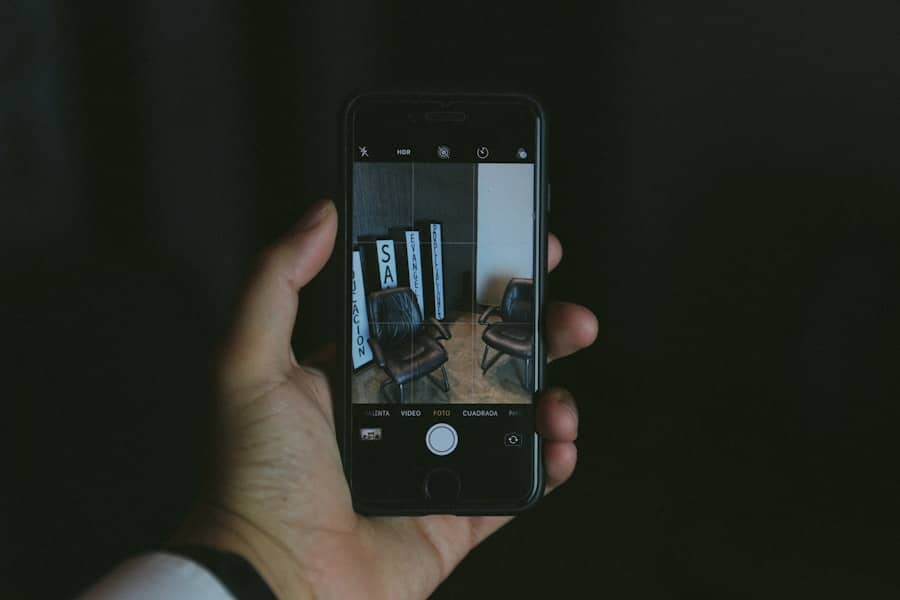Augmented Reality (AR) filters have revolutionized the way users interact with digital content, merging the physical and virtual worlds in a seamless manner. These filters overlay digital images, animations, or effects onto real-world environments, enhancing user experiences across various platforms. Initially popularized by social media applications like Snapchat and Instagram, AR filters have expanded into diverse fields such as marketing, education, and entertainment.
The technology behind AR filters utilizes computer vision, simultaneous localization and mapping (SLAM), and depth tracking to create immersive experiences that captivate users. The rise of AR filters can be attributed to their ability to engage audiences in a unique way. Unlike traditional media, which often presents a one-way communication channel, AR filters invite users to participate actively.
This interactivity fosters a deeper connection between the user and the content, making it more memorable and shareable. As brands and creators recognize the potential of AR filters to enhance storytelling and user engagement, the demand for custom AR experiences continues to grow. This article will explore the essential steps involved in creating effective AR filters, from choosing the right platform to analyzing performance metrics post-launch.
Key Takeaways
- Augmented reality filters are digital overlays that can be added to real-world images and videos to enhance or alter them in real-time.
- When choosing the right platform for creating AR filters, consider factors such as target audience, platform compatibility, and ease of use.
- Designing an AR filter involves creating 2D or 3D assets, adding interactive elements, and optimizing for performance and user experience.
- Understanding AR effects and interactions is crucial for creating engaging and immersive experiences for users interacting with your AR filter.
- Testing and refining your AR filter is essential to ensure it functions as intended and provides a seamless user experience before publishing and sharing it.
Choosing the Right Platform for Creating AR Filters
Understanding the Strengths of Each Platform
Each platform has its strengths; for instance, Spark AR Studio is user-friendly and integrates seamlessly with Facebook’s ecosystem, making it ideal for brands looking to leverage social media marketing.
Choosing the Right Platform for Your Target Audience
When choosing a platform, consider your target audience and the specific features you want to incorporate into your filter. For example, if your goal is to create an engaging experience for a younger demographic, Snapchat’s Lens Studio might be the best choice due to its popularity among Gen Z users.
Technical Requirements to Consider
On the other hand, if you aim to reach a broader audience through Facebook or Instagram, Spark AR Studio would be more suitable. Additionally, evaluate the technical requirements of each platform; some may require coding knowledge while others offer drag-and-drop interfaces that simplify the design process.
Designing Your AR Filter
The design phase is where creativity meets technical execution in the development of AR filters. A well-designed filter should not only be visually appealing but also align with the intended purpose and audience engagement goals. Start by brainstorming ideas that resonate with your target demographic.
Consider current trends, cultural references, or seasonal themes that could inspire your filter’s aesthetic. For instance, during holiday seasons, filters that incorporate festive elements like snowflakes or pumpkins can attract users looking to celebrate. Once you have a concept in mind, sketch out your design and think about how users will interact with it.
Will it be a simple face filter that adds fun elements like sunglasses or hats? Or will it involve more complex interactions, such as animations triggered by specific movements? Utilizing design software like Adobe Illustrator or Blender can help you create high-quality assets that can be imported into your chosen AR platform.
Pay attention to color schemes, textures, and animations; these elements should work harmoniously to create an engaging user experience.
Understanding AR Effects and Interactions
To create an effective AR filter, it is essential to understand the various effects and interactions that can enhance user engagement. AR effects can range from simple overlays to complex animations that respond to user actions. For example, a basic filter might add virtual makeup or accessories to a user’s face, while more advanced filters could include interactive elements that change based on facial expressions or movements.
Understanding how these effects work will allow you to design filters that are not only visually appealing but also interactive and fun. Interactions play a crucial role in keeping users engaged with your filter. Consider incorporating features that allow users to trigger animations or effects through gestures or voice commands.
For instance, a filter could respond to a smile by adding confetti or changing colors, creating a dynamic experience that encourages users to share their interactions on social media. Additionally, think about how users will navigate through different effects; intuitive controls can significantly enhance user satisfaction and increase the likelihood of sharing the filter with others.
Testing and Refining Your AR Filter
Once your AR filter is designed, thorough testing is essential before launching it to the public. Testing allows you to identify any bugs or issues that may affect user experience. Begin by using the built-in testing features of your chosen platform; both Spark AR Studio and Lens Studio offer simulators that allow you to preview how your filter will look on different devices.
After initial testing, gather feedback from a small group of users who can provide insights into their experience with the filter. Encourage them to explore all features and interactions while observing their reactions.
This feedback can highlight areas for improvement that you may not have considered during the design phase. Based on this input, refine your filter by making necessary adjustments to visuals, interactions, or performance issues. Iterative testing and refinement are key components in creating a polished final product that resonates with users.
Publishing and Sharing Your AR Filter
With your AR filter refined and ready for launch, the next step is publishing it on your chosen platform. Each platform has its own submission process; for instance, Spark AR requires creators to submit their filters for review before they go live on Facebook or Instagram. This review process ensures that filters meet community guidelines and function as intended.
Familiarize yourself with these guidelines to avoid delays in publication. Once approved, promote your filter through various channels to maximize visibility.
Collaborating with influencers or content creators can also amplify your reach; they can demonstrate your filter in action, encouraging their followers to try it out themselves. Additionally, consider creating tutorial videos or engaging stories that highlight unique features of your filter, making it easier for users to understand its capabilities.
Promoting Your AR Filter
Promotion is vital for ensuring that your AR filter reaches its intended audience and achieves its engagement goals. Start by leveraging social media platforms where you have an established presence; create eye-catching posts that showcase the unique aspects of your filter. Use hashtags relevant to your target audience and current trends to increase discoverability.
Engaging visuals or short video clips demonstrating the filter in action can capture attention more effectively than static images. In addition to organic promotion, consider investing in paid advertising campaigns on platforms like Instagram or Facebook. These ads can target specific demographics based on interests, behaviors, and location, allowing you to reach potential users who may not be familiar with your brand or filter.
Collaborating with influencers who align with your brand values can also enhance visibility; they can create authentic content using your filter while introducing it to their followers. This strategy not only boosts awareness but also lends credibility to your filter through trusted voices in the community.
Analyzing the Performance of Your AR Filter
After launching your AR filter, analyzing its performance is crucial for understanding user engagement and identifying areas for improvement. Most platforms provide analytics tools that track metrics such as views, shares, and interactions over time. These insights can help you gauge how well your filter resonates with users and whether it meets your initial goals.
Pay attention to user feedback as well; comments and reviews can provide qualitative data about what users enjoy or dislike about your filter. If certain features are particularly popular or if users express interest in additional functionalities, consider these insights when planning future updates or new filters. Continuous analysis allows you to adapt your strategies based on real-world performance data, ensuring that your AR filters remain relevant and engaging in an ever-evolving digital landscape.
If you’re interested in creating an augmented reality filter, you may also want to check out this article on the best software testing books. Understanding software testing principles and techniques can be crucial in ensuring the success of your AR filter project. By learning from experts in the field, you can improve the quality and functionality of your filter, ultimately enhancing the user experience.
FAQs
What is an augmented reality filter?
An augmented reality filter is a digital overlay that can be applied to a user’s camera feed to add virtual elements to the real world. These filters are commonly used on social media platforms and can include effects such as masks, animations, and interactive elements.
What are the benefits of creating an augmented reality filter?
Creating an augmented reality filter can be a fun and engaging way to interact with users on social media platforms. It can also be a creative marketing tool for brands to promote products and engage with their audience in a unique way.
What are the steps to creating an augmented reality filter?
The steps to creating an augmented reality filter typically involve designing the filter using software such as Spark AR Studio, testing the filter on different devices, and then submitting it for approval on the platform where it will be used, such as Instagram or Facebook.
What software is commonly used to create augmented reality filters?
Spark AR Studio is a popular software used to create augmented reality filters for platforms such as Instagram and Facebook. Other software options include Lens Studio for Snapchat and Unity for more advanced AR experiences.
Are there any technical requirements for creating an augmented reality filter?
Creating an augmented reality filter may require some technical knowledge of 3D design, animation, and programming. It is also important to consider the technical specifications and limitations of the platform where the filter will be used.
How can augmented reality filters be used for marketing purposes?
Augmented reality filters can be used for marketing purposes to promote products, engage with customers, and create brand awareness. For example, a cosmetic company may create a filter that allows users to virtually try on different makeup products.



